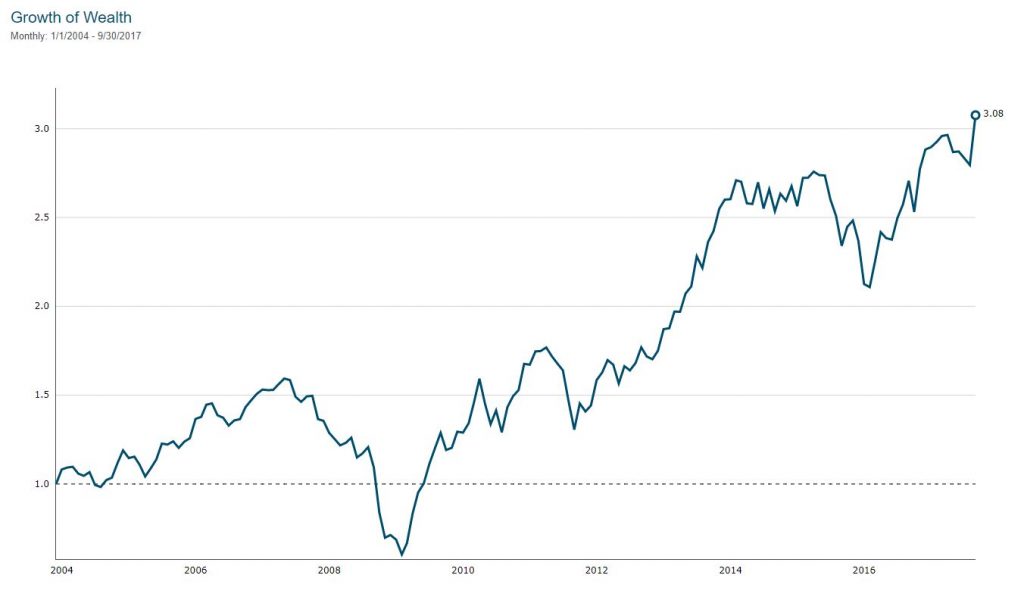Why is Drawdown Correlation a metric worth considering? More than that, what is Drawdown Correlation?
If correlation measures the performance of one investment relative to another over time, then drawdown correlation makes that measurement only when that first investment is in decline. (Full disclosure: I had not yet found a term that describes correlation exclusively when the first asset classes declines, so I coined the term drawdown correlation. Michael Batnick said I could do this.)
Measuring Drawdown Correlation
The process for measuring drawdown correlation is relatively straightforward:
- Locate the daily/monthly/yearly returns of an asset.
- Filter for those periods that the asset produced a negative return.
- Calculate the correlation for those filtered periods to the other asset class.
Why Drawdown Correlation is Not a Spurious Metric
Anyone who has spent time calculating Sharpe and Sortino ratios knows that the Sortino ratio offers little value over the Sharpe ratio – even though the Sortino ratio was created to solve a problem faced by the Sharpe ratio. In short, while making a consideration for downside deviation exclusively sounds like a good idea, since volatility is symmetrical it means that Sharpe and Sortino ratios will show up as quite similar.

This is not the case for drawdown correlation. Total correlation and drawdown correlation are not the same.
Using Bonds to Show the Value of Using Drawdown Correlation
Consider data from three indices stretching back to 1926. (Given the long timeline, it is hard to deny that the given index data is robust.) Note the total correlation of two distinct bond asset classes to the U.S. stock market. Both classes of bonds show relatively low correlation to U.S. stocks. While the government bond index does indeed show lower correlation, the advantage is not outsized.
Monthly Correlation to United States Equities (CRSP 1-10), 1926-2015, Author’s Calculations
| Index | Correlation |
| Morningstar Long-Term U.S. Government Bond Index | 0.09 |
| Morningstar Long-Term Corporate Bond Index | 0.19 |
What’s more, the higher (gross of local taxes) coupon offered by corporate over government bonds and (incorrectly?) perceived additional diversification value of corporate may prompt portfolio constructors to opt for corporate bonds.
Looking at the performance of these two bond asset classes when the market undergoes a negative return tells a much different story when examining total asset class correlation. The drawdown correlation of U.S. government is less than its total correlation, and the drawdown correlation of corporate bonds has almost doubled. In short, when the market goes down, corporate bonds are most likely to go down with the market.
Monthly Correlation when United States Equities (CRSP 1-10) Generated a Negative Return, 1926-2015, Author’s Calculations
| Index | Correlation |
| Morningstar Long-Term U.S. Government Bond Index | 0.00 |
| Morningstar Long-Term Corporate Bond Index | 0.36 |
Moreover, the negative correlation premium offered Government versus Corporate bonds has not increased substantially. Whereas before the negative correlation premium offered by government bonds over corporates was just 0.10, it is now more than three times that.
Unlike Sharpe and Sortino ratios which essentially tell the same story (because volatility is symmetrical), total correlation and drawdown correlation present different information. In fact, it could be argued that at least with respect to constructing the “safe” part of your portfolio, total correlation can be a very misleading metric.
Drawdown Correlation Makes the Case for Exclusive Use of Treasuries for Your Bond Sleeve
A point above is so important that it bears repeating: correlation of corporate BONDS increases during a market drawdown. We are talking about bonds. Bonds are supposed to be the safe part of the portfolio. How can a bond be safe if it is more likely to move with stocks when stocks go down!? It’s because corporate bonds aren’t safe.
Bonds should be examined not on the behavior relative to stocks all the time, but when we really need them the most – during market drawdowns. Enter drawdown correlation.
∙ ∙ ∙
My next peer-reviewed paper is due out in the December issue of the Journal of Financial Planning. I touch on drawdown correlation and dive deep into the value of holding U.S. government bonds over a less safe alternative.
So, what metrics do you consider when you construct your (client’s) portfolios? Is correlation a metric you consider? Why or why not?
Leave a Reply